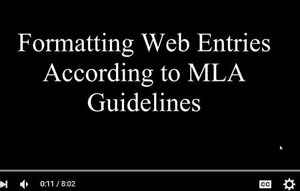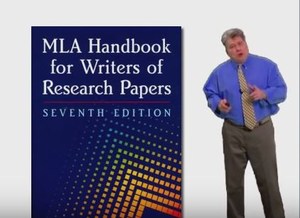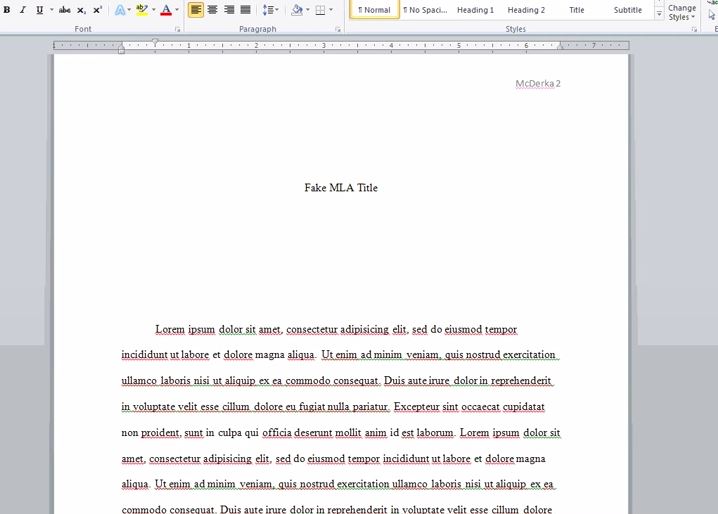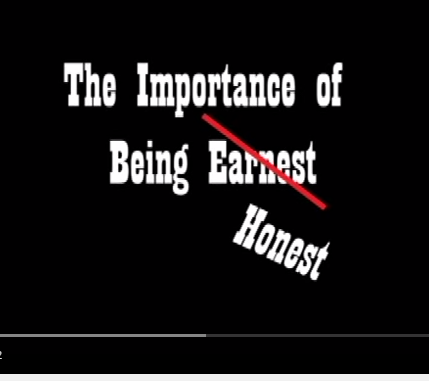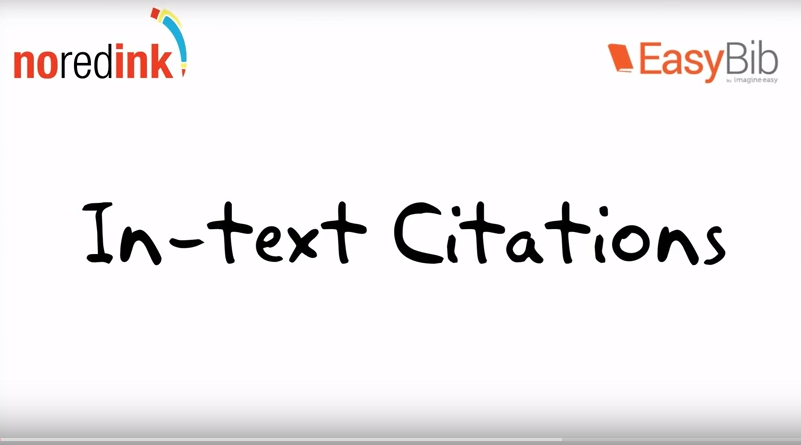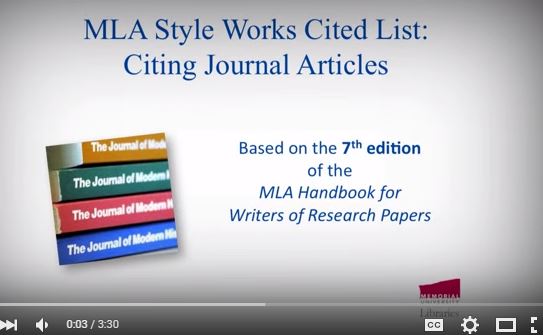MLA
Learning MLA
What is MLA?
MLA stands for Modern Language Association, and MLA format refers to the format the association created that is commonly used in many areas of academic writing, particularly in the humanities. This resource reflects guidelines found in the MLA Handbook for Writers of Research Papers (7th ed.) and the MLA Style Manual and Guide to Scholarly Publishing(3rd ed.).
What will be covered on this page?
- the format of MLA research papers
- endnotes/footnotes
- in-text citations
- Works Cited page.
The Specifics
A properly-formatted MLA-style paper will be constructed as follows:
- Typed on 8.5 X 11 inch paper with 12 pt. font
- 1-inch margins on all sides
- The first line of each paragraph indented one half-inch from the left margin (pro tip: use the tab key instead of the spacebar to ensure perfect indentation)
- Body text of the paper should be double spaced
- Only one space after periods or other punctuation marks
- Number all of your pages in the upper right-hand corner - your page numbers should be a half inch from the top of the paper and in line with your right margin.
What are Citations?
What is a "Works Cited Page" also called a "Bibliography" or "References Page"?
Back in the day, researchers obtained most of their reference materials from printed sources. The word "bibliography” is defined as a list of the books referred to in a scholarly work, usually printed as an appendix which lists the books of a specific author, publisher, or on a specific subject. Today, scholarly resources may come from a vast array of digital sources, not just printed books or paper. Therefore, the name of the list of scholarly sources has changed also.
A Bibliography - Only books may be included in a proper Bibliography.
The References page – contains sources to which you referred when researching your paper, but did not actually cite, as well as sources you did cite. It included all of your sources, books and well as non-book. For example magazine, tape, interview, newspaper, and all digital sources may be included in the "References" page.
A Works Cited page - is a list of only those sources actually cited in your paper; in other words, if there is not a parenthetical reference (In-Text citation) to that particular source in the body of your paper, it should not be included on a Works Cited page.
When using the MLA citation method, this list is usually called, “Works Cited”. However, if the instructor wants a comprehensive list of sources, he or she may direct students to include a “Reference” page.
In-text Citations
In-text citations are important for ensuring that you properly credit your sources. Your instructor needs to be able to identify which parts of your paper are your own vs. the work of others. Giving credit to your sources and not implying that someone else's words or ideas are yours is hugely important in academic writing.
The Differences between a Quote, a Paraphrase and a Summery
Quotations must be identical to the original, using a narrow segment of the source. They must match the source document word for word and must be attributed to the original author.
Paraphrasing involves putting a passage from source material into your own words. A paraphrase must also be attributed to the original source. Paraphrased material is usually shorter than the original passage, taking a somewhat broader segment of the source and condensing it slightly.
Summarizing involves putting the main idea(s) into your own words, including only the main point(s). Once again, it is necessary to attribute summarized ideas to the original source. Summaries are significantly shorter than the original and take a broad overview of the source material.
For more on the differences among quoting, paraphrasing, and summarizing, check out the following links.
Summarizing, Paraphrasing, and Quoting: A Guide to Doing it Right! (Genesee Community College)
How to Paraphrase (Northwest Point Charter School)
Quote, Paraphrase, Summary (Weaver)
How to Cite Books
How to Cite Web Resources in MLA
Purdue OWL Online Writing Lab recommends that it is always a good idea to maintain personal copies of electronic information, when possible. It is good practice to print or save Web pages or, better, using a program like Adobe Acrobat, to keep your own copies for future reference. Most Web browsers will include URL/electronic address information when you print, which makes later reference easy. Also, you might use the Bookmark function in your Web browser in order to return to documents more easily.
Structure: Citing a website with an author
Last, First M. “Article Title.”Website Title. Website Publisher, Date Month Year Published. Web. Date Month Year Accessed.
How to Cite Scholarly Journals in MLA
Scholarly Journals as Resources
Scholarly or peer-reviewed journals have collections of articles written by experts in academic or professional fields. Such journals are excellent for finding out what has been studied or researched on a topic, and to find bibliographies that point to other relevant sources of information.
To learn more about citing scholarly journals click HERE
This video explains how to include online (0:29) and print (2:19) journal articles in your Works Cited List, according to the 7th edition of the MLA Handbook for Writers of Research Papers, and where to find the information you need for your citation (2:42).
How to Cite a Magazines & Newspapers in MLA
Magazines & Newspapers as Resources
Periodicals (magazines) may be quite attractive in appearance although some are in newspaper format. Articles are often heavily illustrated, generally with photographs. News and general interest periodicals sometimes cite sources, though more often do not. Articles may be written by a member of the editorial staff, a scholar or a free-lance writer.
The language of these publications is geared to any educated audience. There is no specialty assumed, only interest and a certain level of intelligence. They are generally published by commercial enterprises or individuals, although some emanate from specific professional organizations. The main purpose of periodicals in this category is to provide information, in a general manner, to a broad audience of concerned citizens.
A newspaper's intended audience is not scholars or researchers but rather citizens at large who are striving to stay informed of what is going in the world, the country, and their community. While newspaper articles are not scholarly articles, they often do contain plenty of good, factual information and can be considered good sources for your research, and may be helpful in giving you an overview of your topic.
Although you may find lots of good information, facts, data and coverage of current events in newspapers, it's important to remember that newspapers are not scholarly sources. Newspapers are not peer-reviewed and are typically written by journalists.
To learn more about citing scholarly newspaper and magazine click HERE
This video explains how to include newspaper and magazine articles in your Works Cited List, according to the 7th edition of the MLA Handbook for Writers of Research Papers. We'll show you how to cite online articles accessed through the library (0:23) or the internet (2:13) or in print (3:11) and what to do if there's no author (3:40).
Citation
Camden Carol Library. "Why We Cite Sources." YouTube. YouTube, 28 Feb. 2013. Web. 23 Oct. 2015.
